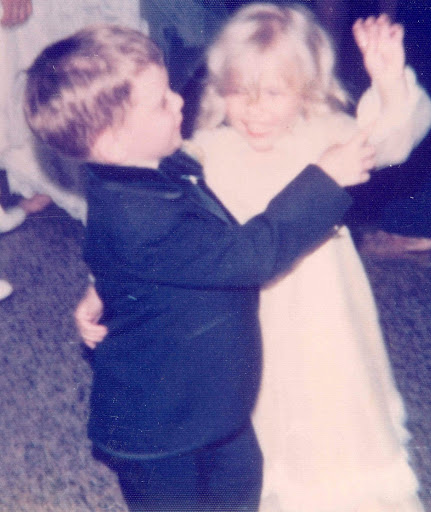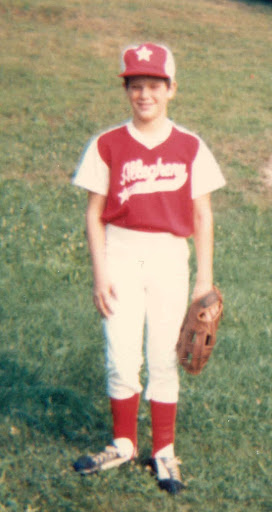
11/30/09
Carter's Rabbit

11/20/09
Richard Nixon reviews Star Wars
 For quite some time, Pat has been begging me to slow down and not work so hard. After weeks of pleading, last night I finally agreed to go out and see this film Tricia and Julie have been raving about for weeks: Star Wars. The movie turned out to be a delightful break from my labors.
For quite some time, Pat has been begging me to slow down and not work so hard. After weeks of pleading, last night I finally agreed to go out and see this film Tricia and Julie have been raving about for weeks: Star Wars. The movie turned out to be a delightful break from my labors.Dear old Pat always knows best.
Star Wars is an exciting space adventure pitting a rag tag band of anti-establishment rebels against an "empire" meant to represent, of course, evil incarnate. This rebel gang includes CP3O, a gold-plated, lispingly homosexual robot, and Chewbacca, a shaggy eight foot tall creature managing to be more hairy and inarticulate than any stoned hippy you've ever seen.
And I know that's saying a lot.
The rebels are also given guidance by a shrunken green man named Yoda with a funny accent who represents the Jewish elite who lend their support to the anti-establishment side.
I must admit at first I didn't like the overt leftist political overtones of the movie. It does not take a lot of sophistication to see the rebels as representing those who do not like our American way of life: The communists, the Hollywood types, the Viet Cong, all the shouters and the bums who'd rather protest than work together to build a stronger America.
It takes true statesmanship, of course, to see the vision of the movie's "villain," Darth Vader, cleverly depicted as an Uncle Tom black who sells out to the establishment. Though the movie depicts him as vicious and power mad, in fact Darth Vader is striving for nothing more than peace through stability.

Dr. Kissinger and I understood this. Though many have criticized our overthrow of the increasingly socialist Allende government in Chile in 1970s, we understood that consolidating our power was absolutely the best way to achieve a lasting peace in South America. Should our "Death Star"—which we should be clear represents the Galactic Empire's spherical version of the Pentagon—been blown up for making the hard but right choices?
I think you can all agree that would be the wrong thing to do.
Despite its misguided politics, however, I found I could not resist the charms of this movie! I found myself on the edge of my seat when Luke Skywalker grabbed that rope and carried the lovely Princess Leia across the threshold—the startrooper's laser beams flashing all around them! And the dog-fighting of the those spaceships before Luke Skywalker blew up the Deathstar? During this scene, my heart was pounding harder than when I faced off against Nikita Kruschev during the Kitchen Debate!
Since my resignation three years ago I have learned to have become more open minded about hippies and leftists. Yesterday even Tricia was listening to this piece of trash Rock'n'roll by some hippy named John Denver. The song was called "Rocky Mountain High," an ode no doubt to smoking dope. Like I said, hippy trash. But I have to admit it had my tapping my toes.
These past years have been a time of deep reflection for me. I have done a lot of thinking during those long, solitary walks along the beach in San Clemente. The world keeps changing but Richard Nixon keep changing with it. If nothing else, watching this movie taught me that the world needs Richard Nixon more than ever.
8/11/09
Fear and Loathing at the Bauerstown Baseball Association

My life in Disco

Surviving in the 1970s
In Fear and Loathing in Las Vegas, Hunter Thompson's 1971 tale of drug excess, makes the comparision to the 60s counterculture explicit:
We are all wired into a survival trip now. No more of the speed that fueled that 60's. That was the fatal flaw in Tim Leary's trip. He crashed around America selling "consciousness expansion" without ever giving a thought to the grim meat-hook realities that were lying in wait for all the people who took him seriously. All those pathetically eager acid freaks who thought they could buy Peace and Understanding for three bucks a hit. But their loss and failure is ours too. What Leary took down with him was the central illusion of a whole life-style that he helped create... a generation of permanent cripples, failed seekers, who never understood the essential old-mystic fallacy of the Acid Culture: the desperate assumption that somebody... or at least some force – is tending the light at the end of the tunnel.It makes sense that the culture of the 70s was tuned to mere survival. If Fear and Loathing in Las Vegas accomplished nothing else, it revealed the very moment in which the 60s counterculture became as empty and ugly as the plastic/corporate culture it was meant to replace.

Peak popularity of daredevils who conquer entirely invented dangers
Songs about aimless wandering
... or the million songs about truckers trying to make it home
70s Disaster films
- The Towering Inferno
- Airport (not to be confused with the great Airplane!)
... and horror films
Songs about being lost in space
- Major Tom
- Rocket Man (both of which use space as a metaphor for drug addiction)
Or songs literally about survival
Making it through, finding your way home, just surviving—themes of a decade afraid to go forward but not wanting to go back.



